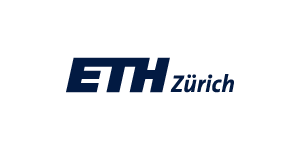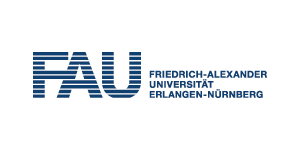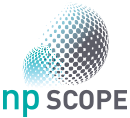npSCOPE, a European collaboration project
Funded by the European Commission within the framework of the EU Research and Innovation programme Horizon 2020, npSCOPE brings together partners from:
- Luxembourg (Luxembourg Institute of Science And Technology - LIST),
- Germany (Carl Zeiss Microscopy Gmbh, Helmholtz-Zentrum Dresden-Rossendorf e.V. and Friedrich-Alexander Universität Erlangen-Nürnberg and MyBiotech GmbH),
- Switzerland (Eidgenössische Technische Hochschule),
- The Netherlands (Photonis Netherlands B.V.),
- Belgium (Vlaamse Instelling voor Technologisch Onderzoek NV),
- France (Institut National De La Recherche Agronomique)
Partner presentation
The Luxembourg Institute of Science and Technology (LIST) is a mission-driven Research and Technology Organisation (RTO) that develops advanced technologies and delivers innovative products and services to industry and society. Note that two independent groups from different departments within LIST will contribute to the npSCOPE project; they are described separately here and referred to within the proposal as LIST-MRT (1a) and LIST-ERIN (1b) in order to make the responsibility for tasks clearer.
The Advanced Instrumentation for Ion Nano-Analytics (AINA) group within the Materials Research and Technology (MRT) Department at LIST focuses on the development of methodologies and instruments for nano-analytics based on charged particle beams, covering fundamental investigations (e.g. study of ion-matter interactions, ionisation processes), instrument development and applications (both in materials science and life science). The AINA team comprises specialists in ion-matter interactions, in nanoanalytics, in charged particle optics and in engineering (mechanics, electronics, software) giving the AINA group the complete spectrum of know-how that is required to develop innovative ideas and concepts and to convert these ideas and concepts into prototype instruments. Recent examples of developments (fundamental background, instrumentation and applications) successfully achieved by the AINA group include Helium Ion Microscopy combined with SIMS, a combined TEM-SIMS instrument, an integrated SIMS-SPM instrument and a Field Portable Mass Spectrometer.

> More info on <link http: www.list.lu _blank>www.list.lu
| Contact at LIST | |
|---|---|
 | Tom Wirtz E-mail: <link>tom.wirtz@list.lu |
Carl Zeiss Microscopy GmbH (ZEISS) is part of the Carl Zeiss group, a leading organization of companies operating worldwide in the optical and optoelectronical industry. ZEISS is one of the world's leading manufacturers of microscopes. In addition to excellent light-, ion- and electron-microscopes, ZEISS also manufactures a diverse range of fluorescence optical sectioning systems as well as high-resolution x-ray microscopes.
In addition to the headquarters in Jena, Carl Zeiss Microscopy has sites at many other locations in Germany and around the globe. Production and development sites are in Goettingen, Munich, Oberkochen, Cambridge (UK) and Peabody (USA).
Microscopy is a key enabling technology in both high tech industries and life sciences research. With its unique portfolio, leading innovations and a highly trained sales force, ZEISS is uniquely positioned to play a major role in finding the answers to the most pressing questions of our society. ZEISS is a leading provider of microscope solutions in the life sciences and materials research markets and QA/QC and also manufactures optical sensor systems for integrated process analysis. From energy solutions to environmental problems to a better understanding of neuronal diseases, cancer and infectious agents, ZEISS has a strong history and current mission to support the efforts for these future findings.

> More info on <link http: www.zeiss.com microscopy _blank>www.zeiss.com/microscopy
| Contact at ZEISS | |
|---|---|
Peter Gnauck E-mail: <link>peter.gnauck@zeiss.com | |
The Helmholtz-Zentrum Dresden-Rossendorf e.V. (HZDR) is a non-profit research organisation and a member of the German “Helmholtz Association”. With around 1,000 employees, it is the largest research institution in the German Federal State of Saxony, being funded by the Federal and Saxonian Governments. The eight institutes of HZDR are active in application-oriented basic research, which is focused on three major research topics: matter, energy, and health.
The Institute of Ion Beam Physics and Materials Research (IIM) at HZDR is mainly active in materials research. It operates the Ion Beam Center (IBC) which represents one of the worldwide leading infrastructures for the investigation of ion-solid interactions and the application of ion technologies in research and industry.
Significant part of IIM activities are related to the directed modification of semiconductor and nanostructures by ion beams based on a close combination of theory/simulation and experimental work. The IIM at HZDR is well experienced in national and European projects, both as partner and coordinator.
Under FP7 it has coordinated the Integrated Infrastructure Initiative SPIRIT and is leading the multimillion H2020 project IONS4SET.

> More info on <link http: www.hzdr.de _blank>www.hzdr.de
| Contact at HZDR | |
|---|---|
 | Gregor Hlawacek E-mail: <link>g.hlawacek@hzdr.de |
PHOTONIS Netherlands B.V. is a manufacturer of advanced photosensors, image intensifiers, and vacuum-based electron multipliers, detectors and other instrumentation. PHOTONIS Netherlands is part of PHOTONIS Technologies holding, headquartered in Merignac, France. PHOTONIS is the largest supplier of microchannel plates (MCPs) and detectors based on them worldwide. Production facilities are located in the Netherlands, France and three places in the US.
> More info on <link http: www.photonis.com _blank>www.photonis.com
| Contact at Photonis | |
|---|---|
Serge Duarte Pinto E-mail: <link>s.duartepinto@photonis.com | |
The Eidgenössische Technische Hochschule Zürich (ETH) is one of the leading international universities for technology and the natural sciences. It is well known for its excellent education, ground-breaking fundamental research and for implementing its results directly into practice. Founded in 1855, it today offers an inspiring working environment for researchers and comprehensive education for students.
ETH Zurich has more than 18,000 students from over 110 countries, including 3,900 doctoral students. About 500 professors currently teach and conduct research in engineering, architecture, mathematics, natural sciences, system-oriented sciences, as well as management and social sciences. ETH Zurich regularly appears at the top of international rankings as one of the best universities in the world. Twenty-one Nobel Laureates have studied, taught or conducted research at ETH Zurich, underlining the excellent reputation of the university.
ETH Zurich concentrates on three core tasks:
i) Education - Training and continuing education of students and specialists in scientific and technical fields.
ii) Research - Extending the scope of scientific knowledge and supporting the next generation of scientists.
iii) Knowledge and technology transfer - Direct transfer of new findings into practical applications.
Among the eight focus areas of ETH, ETH operates five technology platforms (TP) to encourage interdisciplinary cooperation, offer attractive working conditions for highly specialised experts and serving science with state-of-the art infrastructures and expertise.
One of these central TP is the Scientific Center for Optical and Electron Microscopy (ScopeM), an interdisciplinary microscopy facility providing resources for scientific research of materials using dedicated light and electron beams.ScopeM maintains state-of-the art microscopy equipment and supports a variety of interdisciplinary research and training programs as well as methodological research in microscopy. It is open to researchers and users from both academia and industry.
About 30 scientific and technical staff members give their support to researchers, ensuring at the same time the maintenance and operation of the facility equipment. ScopeM scientists are involved in teaching/training of the users, execute service projects and conduct own methodical research. The outcome of the present project is expected benefit the broader users’ community of ScopeM and ETH, as well as further users both from Switzerland and abroad (notably Europe).

> More info on <link http: www.scopem.ethz.ch _blank>www.scopem.ethz.ch
| Contact at ETHZ | |
|---|---|
 | Nicolas Blanc E-mail: <link>nicolas.blanc@scopem.ethz.ch |
The Friedrich-Alexander University Erlangen-Nuremberg was established in 1742 and today is roughly the tenth largest university in Germany and the second largest university in Bavaria with about 40.000 students. The FAU covers the full spectrum of academic education with five faculties for medicine, natural sciences, engineering, humanities and the law and economics domain.
Participating in the npSCOPE project is the institute for optics, information and plasmonics at the physics department in cooperation with the Max-Planck-Institute for the Physics of Light (MPL) under the guidance of Prof. Gerd Leuchs, who is a director at the MPL and heading the institute for optics.
The main contributions to the npSCOPE project are performed in cooperation with the Christiansen Research Group at the MPL. We provide complementary characterizations of samples for benchmarking and demonstrating the capabilities of the npSCOPE instrument. We participate in the round-robin-studies for the mass spectrometer functionality of the npSCOPE instrument to implement reliable analysis routines. And we are the work package leader of WP3 and will be mainly responsible for automated data analysis and data handling routines for the npSCOPE data.
© by Selby – own work, CC BY-SA 3.0,<link https: commons.wikimedia.org w> commons.wikimedia.org/w/index.php
> More info on the <link http: www.mpl.mpg.de en institute christiansen-research-group.html>Christiansen research group
> More info on <link https: www.fau.eu>FAU
| Contacts at FAU | |
|---|---|
 | Silke Christiansen E-mail: <link>silke.christiansen@mpl.mpg.de |
 | Uwe Mick E-mail: <link>uwe.mick@fau.de |
VITO is a leading European independent research and technology organization that provides innovative and high-quality solutions to industry and public authorities. It also offers scientifically based advice and support in the domains of chemistry, energy, health, materials management and land use in order to stimulate sustainable development. The research focus of the Health department is in the field of sustainable health and disease prevention, with a focus on safe, effective and/or personalized technological innovations. Nanomaterial safety assessment, including physico-chemical nanomaterial characterization in environmental compartments, biological effect measurement and risk assessment, is an integral part of VITO’s contract services. Risk assessment along the life cycle of nanoproducts based on a safety-by-design approach and QSARs is key in these activities, and benefit largely from reliable and reproducible multi-parameter characterization technologies as aimed for in this project.
> More info <link https: vito.be en _blank>www.vito.be
| Contact at VITO | |
|---|---|
Inge Nelissen E-mail: <link>inge.nelissen@vito.be | |
MyBiotech is a CDMO offering end to end development, manufacturing services and innovative products for biotech and pharma. MyBiotech`s mission is bringing biotechnology and pharmaceutical products into the market in a fast and efficient way. Furthermore, the company aims to become leading partner in biotechnology and pharmaceutical research and development, manufacturing, and processing in Europe and beyond. At MyBiotech innovative technologies are brought to be a part of the solution bringing projects one step closer to success. Current products are realised by green technologies such as production of omega-3 fatty acids from algae. Innovative, more efficient pharmaceuticals are already identified for the short-term pipeline. In order to be able to offer contract manufacturing to the pharmaceutical sector, a GMP certification and establishment of a new GMP-compliant manufacturing site will serve to fill the gap for bringing the formulations with innovative character to the market.

> More info on https://mybiotech.de/
| Contact at MyBiotech | |
|---|---|
Nazende Günday Türeli E-mail: N.Guenday-Tuereli@mybiotech.de | |
TOXALIM (Research Centre in Food Toxicology) is a Joint Research Unit (UMR 1331) of the French National Institute for Agricultural Research (INRA) and the University of Toulouse (Paul Sabatier University Toulouse III). The TOXALIM expertise covers broad scientific areas in the field of food toxicology and of physiopathology (gastrointestinal and liver functions, risk factors for metabolic diseases, chronic inflammatory diseases and cancer). In partnership with the French and European health authorities (ANSES, RIVM, EFSA), TOXALIM contributes to the development of basic knowledge and recommendations for disease prevention with respect to acute vs. long-term effects on human health of various xenobiotics such as pesticides, endocrine disruptor compounds, micro- and nanoparticles of dietary origin.

> More info on <link http: www6.toulouse.inra.fr toxalim_eng _blank>www.inra.fr
| Contact at TOXALIM | |
|---|---|
Eric Houdeau E-mail: <link>eric.houdeau@inra.fr | |
-

Luxembourg Institute of Science and Technology (LIST)
-

Carl Zeiss Microscopy Gmbh (ZEISS)
-

Helmholtz-Zentrum Dresden-Rossendorf Ev (HZDR)
-

Photonis Netherlands B.V (PHOTONIS)
-

Eidgenoessische Technische Hochschule (ETH Zürich)
-

Friedrich-Alexander-Universitaet Erlangen Nürnberg (FAU)
-

Vlaamse Instelling voor Technologisch Onderzoek NV (VITO)
-

MyBiotech GmbH
-

Institut National de la Recherche Agronomique (TOXALIM)

